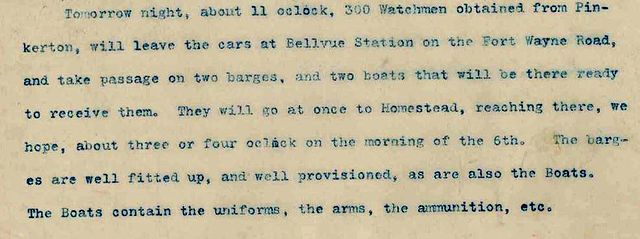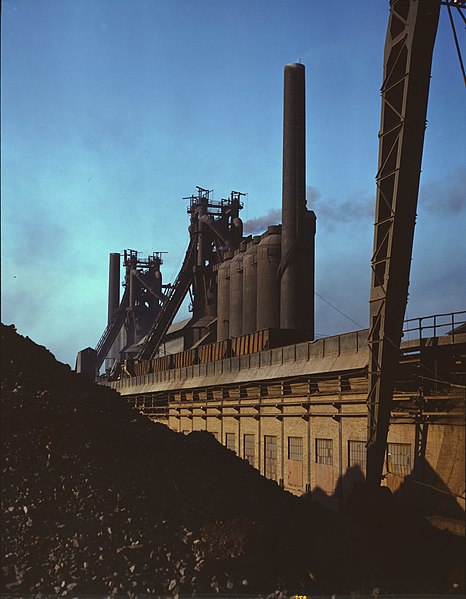Henry Clay Frick was an American industrialist, financier, and art patron. He founded the H. C. Frick & Company coke manufacturing company, was chairman of the Carnegie Steel Company and played a major role in the formation of the giant U.S. Steel manufacturing concern. He had extensive real estate holdings in Pittsburgh and throughout the state of Pennsylvania. He later built the Neoclassical Frick Mansion in Manhattan, and upon his death donated his extensive collection of old master paintings and fine furniture to create the celebrated Frick Collection and art museum. However, as a founding member of the South Fork Fishing and Hunting Club, he was also in large part responsible for the alterations to the South Fork Dam that caused its failure, leading to the catastrophic Johnstown Flood. His vehement opposition to unions also caused violent conflict, most notably in the Homestead Strike.
Henry Clay Frick
Frick's letter to Carnegie describing the plans and munitions that will be on the barges when the Pinkertons arrive to confront the strikers in Homestead.
Berkman's attempt to assassinate Frick, as illustrated by W. P. Snyder in 1892, originally published in Harper's Weekly.
Clayton
Carnegie Steel Company was a steel-producing company primarily created by Andrew Carnegie and several close associates to manage businesses at steel mills in the Pittsburgh, Pennsylvania area in the late 19th century. The company was formed in 1892, and was subsequently sold in 1901 in one of the largest business transactions of the early 20th century, to become a major component of U.S. Steel. The sale made Carnegie one of the richest men in history.
Blast furnaces and iron ore at the Carnegie-Illinois Steel Corporation mills in 1941





